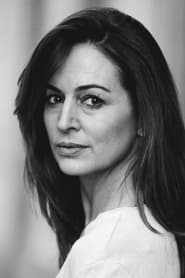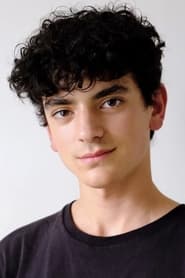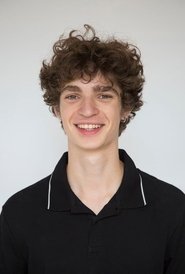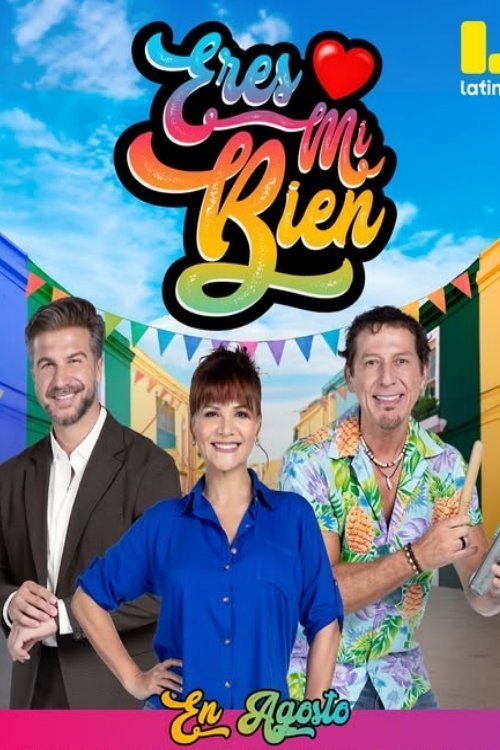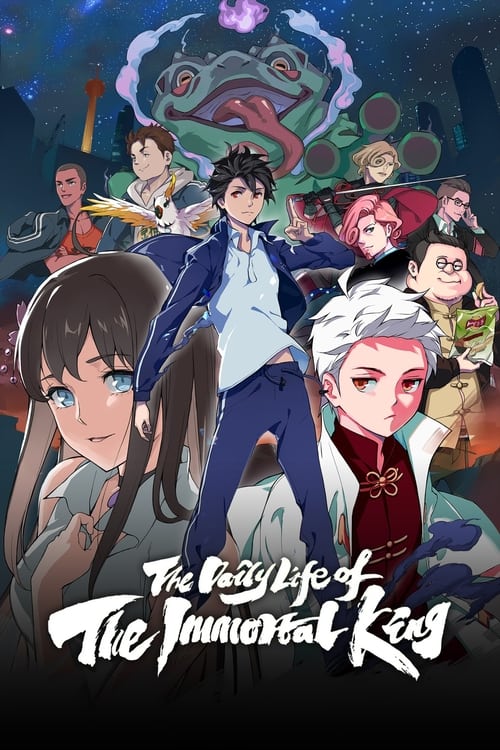
Ask Your Own Question
What is the plot?
The new school year at the Zurbarán Institute begins with a somber atmosphere, marked by the recent loss of a student named Lucía. The school community is visibly affected, with students and staff gathering in the courtyard for a memorial ceremony. The head of the parents' cooperative, Brianda, addresses the assembly, announcing new strict rules and disciplinary measures in response to the tragedy. She emphasizes that the school will no longer tolerate any form of indiscipline, making it clear that these changes are a direct consequence of what happened to Lucía.
Inside the staff room, Brianda argues with Ramón, a veteran teacher, about the new regulations. Brianda insists that strict discipline is the only solution to prevent further incidents, while Ramón expresses concern that such measures might alienate the students. Martha, the new philosophy teacher, joins the conversation, advocating for a more empathetic approach and stressing the importance of listening to the students' voices. Brianda cuts her off coldly, dismissing her ideas and asserting that students only care about their phones and sex, and that mental health concerns are just excuses for bad behavior.
Martha enters her first class, visibly enthusiastic and eager to connect with her students. She tries to engage them by asking what makes them happy, hoping to spark a meaningful discussion. However, her efforts are met with indifference, mockery, and sarcastic comments. The students remain glued to their phones, barely paying attention to her. Martha is visibly disappointed, realizing that her idealistic approach is not resonating with the class.
Suddenly, the classroom door opens, and a student named Hugo enters without permission. The class falls silent, and Martha invites him to join. Hugo hesitates, looking at Martha with an expression of surprise and confusion, but eventually takes a seat. The moment is tense and awkward, but Martha continues with her lesson, trying to maintain her composure.
Later, the parents' cooperative officially announces the creation of a support group for students, aimed at helping them cope with the loss of Lucía and other personal challenges. The group is composed of eleven teenagers from different backgrounds, each with their own struggles. The first meeting is held in a classroom, with Martha facilitating. The students are initially reluctant and skeptical, exchanging glances and whispering among themselves.
Martha begins by asking each student to introduce themselves and share something about their lives. Some students are hesitant, while others are openly hostile. One student, Carla, refuses to participate, challenging Martha's authority and questioning the point of the group. Another student, Dani, tries to lighten the mood with jokes, but his attempts fall flat. The session ends with little progress, but Martha remains determined to help them open up.
Meanwhile, Brianda observes the group from outside the classroom, watching through the window. She exchanges a tense look with Ramón, who is concerned about the students' well-being. Brianda remains firm in her belief that discipline is the answer, while Ramón worries that the students need more support and understanding.
In the final scene, Martha returns to her classroom after the support group meeting. She finds a note on her desk, written by an anonymous student, expressing gratitude for her efforts and a desire to talk. Martha reads the note with a mix of hope and sadness, realizing that change will not come easily, but that there is a chance for connection and healing.
What is the ending?
Short, Simple Narrative Ending
At the end of Episode 1 of Física o química: La nueva generación, the students of Zurbarán High School, still reeling from the recent loss of a classmate, gather in a support group organized by the parents' cooperative. Tensions run high as the group's dynamics begin to form, with some students clashing and others tentatively reaching out. The episode closes with the group's first meeting, leaving the characters--and the audience--uncertain about how they will cope with their grief and the challenges of a new school year.
Expanded, Chronological, Scene-by-Scene Narrative
The episode opens with the first day of the new school year at Zurbarán High School. The atmosphere is heavy; the halls are quieter than usual, and students exchange nervous glances. The loss of a student over the summer hangs over everyone, especially the group of eleven teenagers who are about to become the focus of the series. Each arrives with their own baggage: Rocío Velayos's character is withdrawn, carrying a notebook she clutches tightly; María Bernardeau's character tries to lighten the mood with jokes, but her eyes betray her anxiety; Biel Antón's character keeps to himself, headphones on, avoiding eye contact; Kiko Bena's character is loud and brash, masking his discomfort with bravado; Miguel Fernández's character is observant, scanning the room as if searching for something--or someone--missing.
The school's new management, a parents' cooperative, has decided to create a support group to help the students process their grief. The announcement is met with mixed reactions: some students roll their eyes, others nod silently, a few look relieved. The group's first meeting is held in a sunlit classroom that feels both too big and too small for the emotions inside. Chairs are arranged in a circle, but no one wants to sit in the center. The teacher, played by Israel Elejalde, tries to guide the conversation, but the students are hesitant. Silma López's character, another teacher, watches from the side, her expression a mix of concern and hope.
One by one, the students are asked to share how they're feeling. Rocío's character speaks first, her voice barely above a whisper. She talks about how hard it is to be back, how the empty desk in the classroom is a constant reminder. María's character cracks a joke, but it falls flat; she quickly looks down, embarrassed. Biel's character refuses to speak, crossing his arms and staring at the floor. Kiko's character interrupts, saying they should just move on, but his voice cracks, revealing his pain. Miguel's character finally speaks up, suggesting they find a way to honor their lost classmate, which sparks a heated debate. Some agree, others argue it's too soon, and a few simply cry.
As the meeting continues, alliances and conflicts begin to form. Two students exchange supportive glances, while another pair glares across the circle. The teachers try to mediate, but the emotions are too raw. The episode's final scene shows the group dispersing, some walking out together, others alone. Rocío's character lingers, looking at a photo on her phone--presumably of the lost student--before putting it away and joining the others. The camera lingers on the empty chair in the circle, a silent testament to the absence they all feel.
By the end of the episode, no one has fully processed their grief, but the first steps toward healing have been taken. The fate of each main character is left open: Rocío's character is still withdrawn but has shown a willingness to connect; María's character is struggling to balance humor and vulnerability; Biel's character remains closed off, but there's a hint he might open up in time; Kiko's character's bravado is clearly a facade, and Miguel's character emerges as a potential leader, advocating for unity. The teachers, too, are affected, watching their students with a mix of hope and worry, unsure if their efforts will be enough.
The episode does not offer easy answers or resolutions. Instead, it presents a raw, honest look at how a group of teenagers--and the adults who care for them--begin to navigate loss, change, and the uncertain terrain of a new school year. The empty chair in the circle is a recurring visual motif, a reminder of the absence that binds them and the challenge of moving forward together.
Is there a post-credit scene?
Yes, the first episode of Física o química: La nueva generación (Season 1, Episode 1, 2025) includes a post-credit scene. After the main events of the episode, the scene shows the group of students smoking marijuana together, feeling light and carefree as they laugh and play, temporarily forgetting their problems. When Ramón and Brianda arrive to find them, the group escapes together before being discovered. Before leaving, they take a photo to remember the moment. The scene continues with various characters in intimate or reflective moments: Marina with herself, Bárbara holding pills that belonged to Silvia, Charlotte looking thoughtfully at a photo with Silvia, Asia, Col, and John affirming their three-person relationship, Iri inviting Jeremy to eat, and Pelayo silently watching an intimate video of himself with Silvia on his phone, implying a secret relationship. This post-credit scene closes the episode with a sense of ongoing personal and group dynamics among the students.
What triggers the creation of the support group at Zurbarán in Episode 1?
The new school year at Zurbarán begins marked by the loss of a student, which prompts the parents' cooperative managing the school to decide to create a support group for the students.
Who are the main characters introduced in Episode 1 and what are their initial conflicts?
Eleven diverse teenagers are introduced as main characters who end up sharing the support group space. Their initial conflicts include clashing values and personal struggles related to adolescence, such as dealing with grief, self-discovery, and first experiences of love and loss.
How does the loss of a student affect the dynamics among the students in Episode 1?
The loss of a student creates a somber atmosphere that leads to the formation of the support group, where students confront their grief and begin to open up about their personal issues, leading to both clashes and moments of connection among them.
What role do the teachers play in Episode 1 of Física o química: La nueva generación?
Teachers are part of the new generation at Zurbarán and are involved in guiding the students through their challenges, though specific teacher-student interactions in Episode 1 focus on managing the aftermath of the student's death and supporting the new support group.
What themes are explored through the students' interactions in the support group in Episode 1?
The support group scenes explore themes of grief, adolescence, identity, and the complexity of teenage emotions, highlighting the students' struggles with first experiences such as love, loss, and self-acceptance.
Is this family friendly?
Física o química: La nueva generación, Season 1, Episode 1 is not strictly family friendly and is intended for a teen and adult audience. The episode contains themes and scenes that may be upsetting or inappropriate for young children or sensitive viewers. These include references to the recent death of a student, which is central to the episode's emotional tone and leads to discussions about grief and loss among the characters. There are also depictions of teenage drinking, partying, and emotional confrontations that reflect the intensity of adolescent experiences. While there is no explicit violence or nudity, the episode explores mature topics such as mental health, peer pressure, and complex interpersonal relationships, which may be disturbing for younger or more sensitive audiences.










